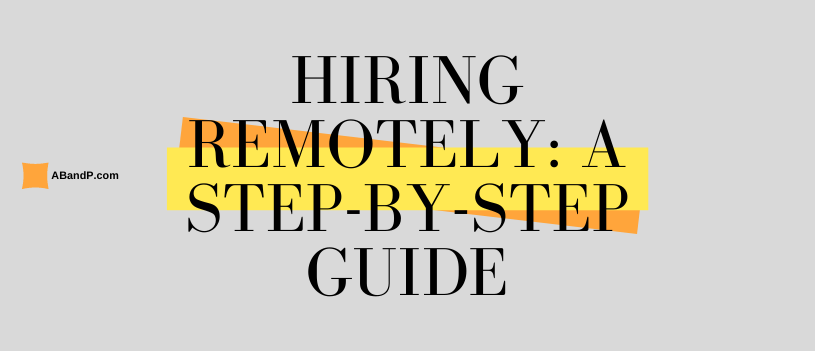If you’ve been one of the businesses lucky enough to be expanding your team during the pandemic, you likely know about some of the challenges of remote hiring. We’ve already looked at some of the expectations you should have about virtual hiring in our article “Hiring Remotely During COVID-19,” and today we will be delving even further into this topic and giving you some best practices for each phase of the process.
Creating Your Job Posting
As CPA Practice Advisor points out in their article “11 Tips for Hiring Remotely,” the traditional job fair from days of yore is unlikely to return anytime soon. As such, employers need to update their methods for getting the word out about their available positions and connecting with new talent.
The first thing you can do to ensure you’re reaching the right candidates is to do some research on where professionals in your industry are searching for jobs. Some popular options are business networking social media apps such as LinkedIn and job posting websites such as Indeed and Zip-recruiter. Show up on these platforms to connect with your ideal applicant.
When you create your job posting, there are a few things to keep in mind. Firstly, you will want to optimize it with key search terms so that those looking for positions like yours can easily find it and use the title to determine whether or not they’d like to learn more about the job. While fun titles might be amusing internally, they will not rank well in search. If you’re not sure what you should title your job posting, just think about what your ideal applicant might type into the search bar.
You also want to be upfront about the job requirements and duties. This means no sugarcoating the less glamorous parts of the position. You can improve employee retention by being honest in your initial posting.
With many job seekers looking for flexibility in these unusual times, be sure to include keywords such as “remote” and “work from home” in order to attract applicants who are looking for telecommuting positions.
Interviewing
When interviewing remotely, there are a few best practices you can follow. In addition to checking a candidate’s proficiencies and skills within your field, you should also take into account soft skills that may aide them in a telecommuting environment, such as time management, self-motivating, and communication.
Remember that the interview goes both ways, and you should tell the applicant about your company culture to aide them in deciding whether or not your business is a good fit for their work style and needs.
Making the Hire
When you think you’ve found the right candidate, you may want to consider creating a contract for a 30-90 day trial period before extending a long-term offer. This will give you the ability to see the applicant’s skills in action and observe how they fit within your existing team.
Having a solid virtual onboarding process is also very important. You can create a welcome package and send it by mail. Don’t forget to set your new employee up with any hardware and/or programs that they need to perform their job duties. Make sure your new hire gets properly acquainted with your team by holding a virtual lunch. You can even send food to each team member via a delivery service and encourage everyone to eat together and network on a video call.
Remote hiring is likely here to stay, so creating a process that works for your team will be a great asset to you not only in the coming months, but for the greater foreseeable future. Virtual hires can be valuable members of your team and just because you cannot interview them in person doesn’t mean that you can’t find the perfect fit for your (and their) needs.
